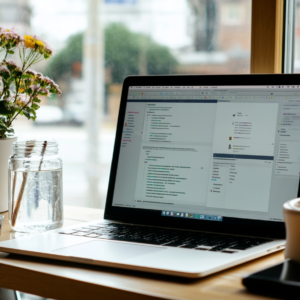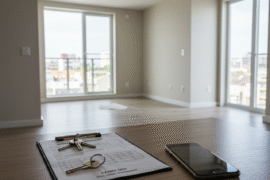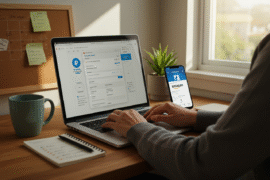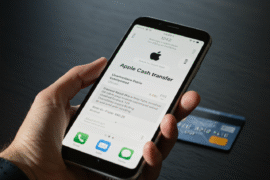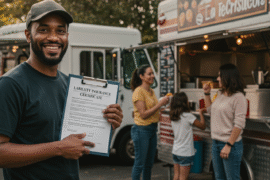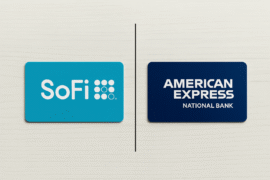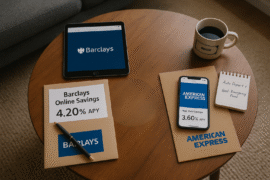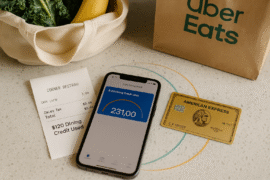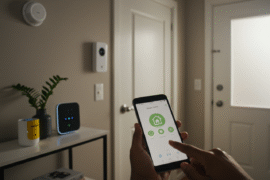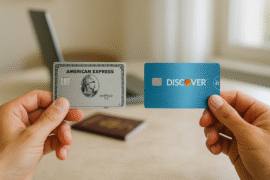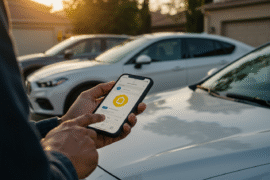This article may contain references to products or services from one or more of our advertisers or partners. We may receive compensation when you click on links to those products or services. Nonetheless, our opinions are our own.
The information presented in this article is accurate to the best of our knowledge at the time of publication. However, information is subject to change, and no guarantees are made about the continued accuracy or completeness of this content after its publication date.
- Key Highlights
- Introduction
- Understanding No Money Down Home Buying
- The Basics of No Money Down Financing Options
- Preparing to Purchase Your Home with No Money Down
- A Beginner’s Guide to No-Money-Down Home Purchases
- Exploring Your No Money Down Options
- Navigating Challenges and Common Misconceptions
- Maximizing Benefits and Minimizing Risks
- Conclusion
- Frequently Asked Questions
- Recommended Reads
Key Highlights
- Many people think you cannot buy a home with no money down, but it is possible, especially for first-time buyers.
- Government loans, like VA and USDA loans, provide options with no down payment for those who qualify.
- It is important to understand your financial health, credit score, and if you meet the requirements for this loan.s
- A lender who knows a lot about these types of loans can help make things easier.
- Knowing about interest rates, loan terms, and any challenges is important for having a good home-buying experience.ce
- Although there are no-money-down options, you should think carefully about your financial situation and goals before deciding.
Introduction
Buying a home for the first time can feel overwhelming, especially when saving for a down payment. The good news is that it is possible to buy a house with little or no money down. This often involves government-backed loans or special programs with specific qualifications. However, getting a home loan with no down payment requires understanding eligibility requirements, credit score minimums, and potential mortgage insurance costs.
Understanding No Money Down Home Buying
Buying a home with no money down may seem unrealistic, but it is possible for many buyers. This approach allows you to find loans that cover 100% of the home’s purchase price, eliminating the need for a down payment. These loan options make homeownership more accessible, particularly for those struggling to save a large down payment.
There are several options for no-money-down financing, but they come with specific requirements. Some programs require you to be a first-time homebuyer, a veteran, or a resident in a rural area. These loans may also have credit score requirements and purchase price limits.
Demystifying the Myth: Can You Buy a Home with No Money Down?
Many people believe you need a large down payment—often 20% of the purchase price—to buy a home. This is not true. You can purchase a home with no money down through government-backed loans like VA loans for veterans or USDA loans for rural homebuyers.
These programs are designed to help qualified individuals and families achieve homeownership without requiring a traditional down payment. However, each program has specific eligibility criteria. To successfully buy a home with no money down, research is key, as well as understanding your financial situation and consulting lenders who offer these types of loans.
The Basics of No Money Down Financing Options
Government-Backed Loans
- VA Loans: Available for veterans, active-duty military members, and qualifying spouses, VA loans provide 100% financing with no down payment.
- USDA Loans: Designed for homebuyers in rural areas, USDA loans also offer 100% financing, making homeownership more accessible in certain locations.
Other Programs
Down Payment Assistance Programs
These programs provide grants, forgivable loans, or zero-interest loans to help buyers cover down payment costs.
Each financing option has its own rules and requirements. While they allow you to purchase a home without upfront cash, factors such as loan amount limits, interest rates, and eligibility criteria vary. Consulting a knowledgeable lender can help you find the best option for your situation.
Voted "Best Overall Budgeting App" by Forbes and WSJ
Monarch Money helps you budget, track spending, set goals, and plan your financial future—all in one app.
Get 50% OFF your first year with code MONARCHVIP
Preparing to Purchase Your Home with No Money Down
Before buying a home, it’s important to assess your financial situation, including your credit score and potential eligibility for no-money-down programs. Having this information will help you make informed decisions.
Assessing Your Financial Health and Credit Score
Just as a doctor evaluates your health before giving treatment, you need to assess your financial health before applying for a mortgage.
- Check Your Credit Report – Your credit history impacts loan approval and interest rates.
- Improve Your Credit Score – Pay bills on time, reduce debt, and correct any credit report errors to qualify for better loan terms.
- Understand Your Debt-to-Income Ratio – Lenders assess your debt payments against your income. Lowering your debt-to-income ratio can improve your chances of approval.
Identifying Eligibility for No Money Down Programs
Once you understand your financial standing, the next step is determining which no-money-down programs you qualify for.
- VA Loans – Available to veterans and active military members with no down payment required.
- USDA Loans – These are designed for homebuyers in eligible rural areas.
Check each program’s eligibility criteria, such as income limits and property location requirements. Speaking with a lender specializing in these loans can help determine the best fit for you.
A Beginner’s Guide to No-Money-Down Home Purchases
Purchasing a home can feel overwhelming, but a clear plan and expert guidance can make the process easier.
What You Need to Get Started
- Know Your Loan Options – VA and USDA loans offer 100% financing, while FHA loans require a small down payment.
- Gather Financial Documents – Pay stubs, bank statements, and tax returns will be needed for mortgage approval.
Step 1: Research and Choose the Right No Money Down Loan Option
Compare loan programs to determine eligibility and best fit. VA loans are ideal for military members, while USDA loans work for buyers in designated rural areas.
Step 2: Find a Lender Specializing in Zero-Down Financing
Work with a lender who understands VA and USDA loan requirements. Compare rates and loan terms from multiple lenders.
Step 3: Complete the Application and Pre-Approval Process
Submit financial documents for pre-approval. Pre-approval strengthens your offer when buying a home.
Step 4: Search for Eligible Properties
Work with a real estate agent to find homes that qualify for your chosen loan program. Some loans have restrictions on property locations.
Step 5: Prepare for Closing and Moving In
Complete all necessary paperwork, finalize your loan, and review closing costs before signing. Once finalized, receive the keys to your new home.
Exploring Your No Money Down Options
VA Loans: A Path for Veterans and Active Military
VA loans provide eligible military personnel and veterans with no down payment, lower interest rates, and no private mortgage insurance (PMI). A one-time funding fee applies but can be rolled into the loan.
USDA Loans: Opportunities for Rural Homebuyers
USDA loans assist buyers purchasing homes in eligible rural areas with 100% financing. These loans have income limits and require a mortgage insurance premium.
Other Government and Private Financing Programs
Many state and local housing agencies offer down payment assistance programs, grants, or employer-assisted homebuying programs.
Understanding Interest Rates and Loan Terms
- Interest Rates – A small rate change can significantly affect monthly payments.
- Loan Terms – Choose between 15- or 30-year terms based on affordability and long-term financial goals.
Avoiding Predatory Lending Practices
Be cautious of lenders with hidden fees, high interest rates, or misleading loan terms. Always compare multiple loan offers and seek advice from trusted financial professionals.
Maximizing Benefits and Minimizing Risks
The Importance of Home Inspection and Appraisal
- Home Inspection – Identifies potential structural or maintenance issues.
- Appraisal – Ensures the home’s value matches the purchase price, which is required for mortgage approval.
Budgeting for Future Homeownership Expenses
In addition to the mortgage payment, factor in property taxes, homeowners insurance, maintenance costs, and HOA fees when creating a budget.
Conclusion
Buying a home with no money down is possible through various financing programs. By researching loan options, assessing financial health, and working with the right lender, homeownership can become a reality. Understanding loan terms, avoiding predatory lenders, and planning for future expenses will help ensure a successful home purchase.
Frequently Asked Questions
Can I buy a home with no money down with a low credit score?
It may be challenging, but some lenders and programs, such as credit unions and down payment assistance programs, offer flexible eligibility for buyers with lower credit scores.
Are there income limits for no-money-down home-buying programs?
Yes, some programs, like USDA loans, set income limits based on location. Check with a lender to see if you qualify.
What are the long-term implications of a zero-down mortgage?
A zero-down mortgage may result in a higher interest rate and slower equity growth, but it also allows buyers to enter the housing market sooner.

Reviewed and edited by Albert Fang.
See a typo or want to suggest an edit/revision to the content? Use the contact us form to provide feedback.
At FangWallet, we value editorial integrity and open collaboration in curating quality content for readers to enjoy. Much appreciated for the assist.
Did you like our article and find it insightful? We encourage sharing the article link with family and friends to benefit as well - better yet, sharing on social media. Thank you for the support! 🍉
Article Title: Buy a Home with No Money Down: Is It Really Possible?
https://fangwallet.com/2025/03/12/buy-a-home-with-no-money-down/The FangWallet Promise
FangWallet is an editorially independent resource - founded on breaking down challenging financial concepts for anyone to understand since 2014. While we adhere to editorial integrity, note that this post may contain references to products from our partners.
The FangWallet promise is always to have your best interest in mind and be transparent and honest about the financial picture.
Become an Insider

Subscribe to get a free daily budget planner printable to help get your money on track!
Make passive money the right way. No spam.
Editorial Disclaimer: The editorial content on this page is not provided by any of the companies mentioned. The opinions expressed here are the author's alone.
The content of this website is for informational purposes only and does not represent investment advice, or an offer or solicitation to buy or sell any security, investment, or product. Investors are encouraged to do their own due diligence, and, if necessary, consult professional advising before making any investment decisions. Investing involves a high degree of risk, and financial losses may occur including the potential loss of principal.
Source Citation References:
+ Inspo
There are no additional citations or references to note for this article at this time.


